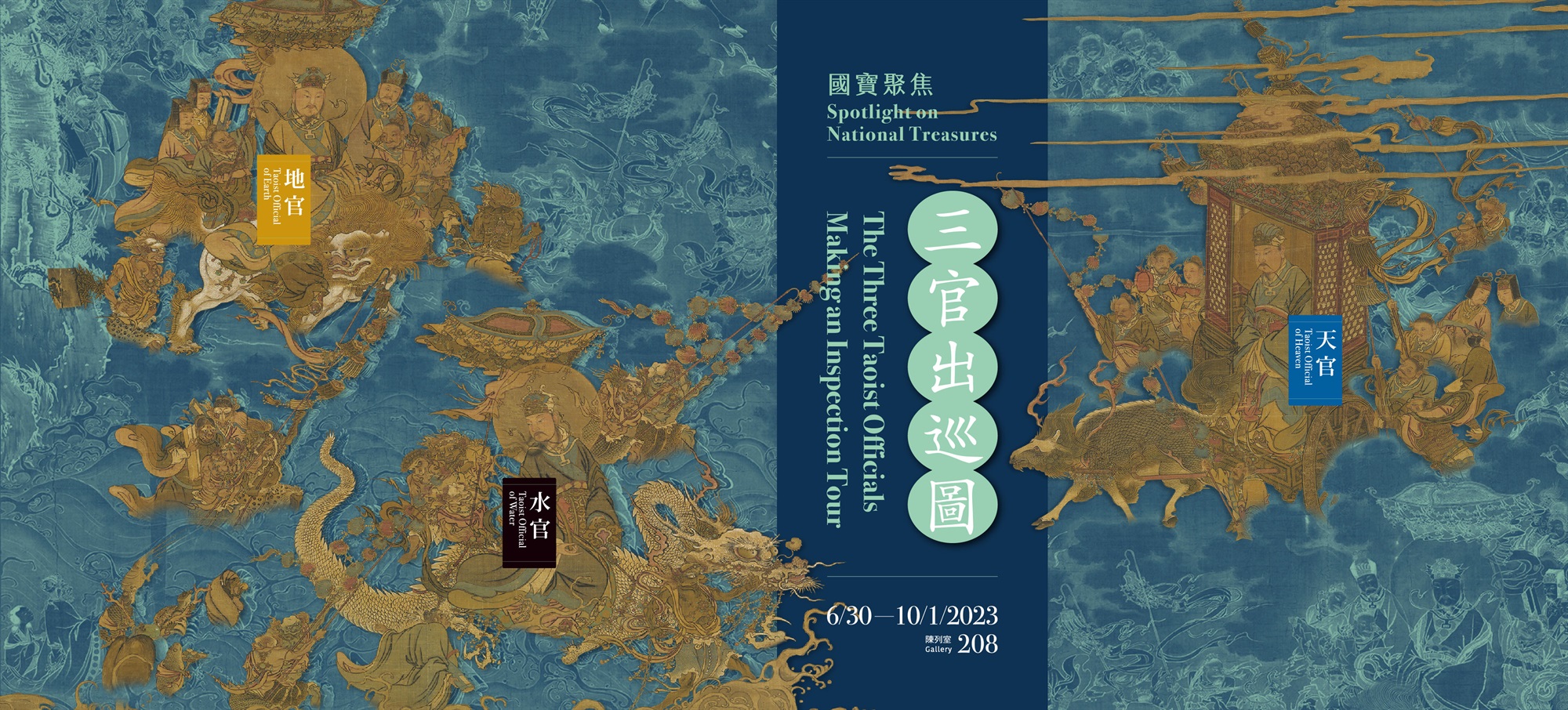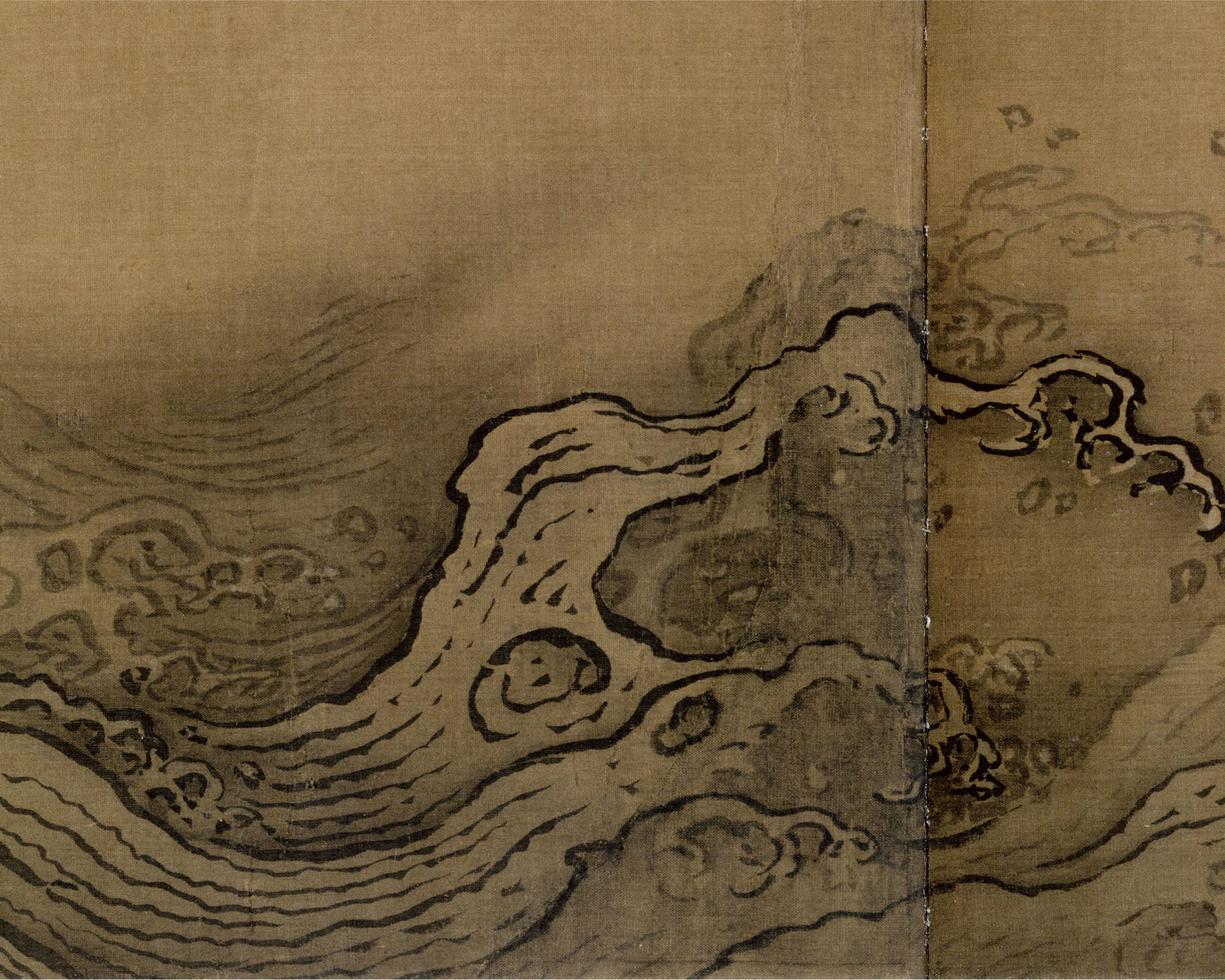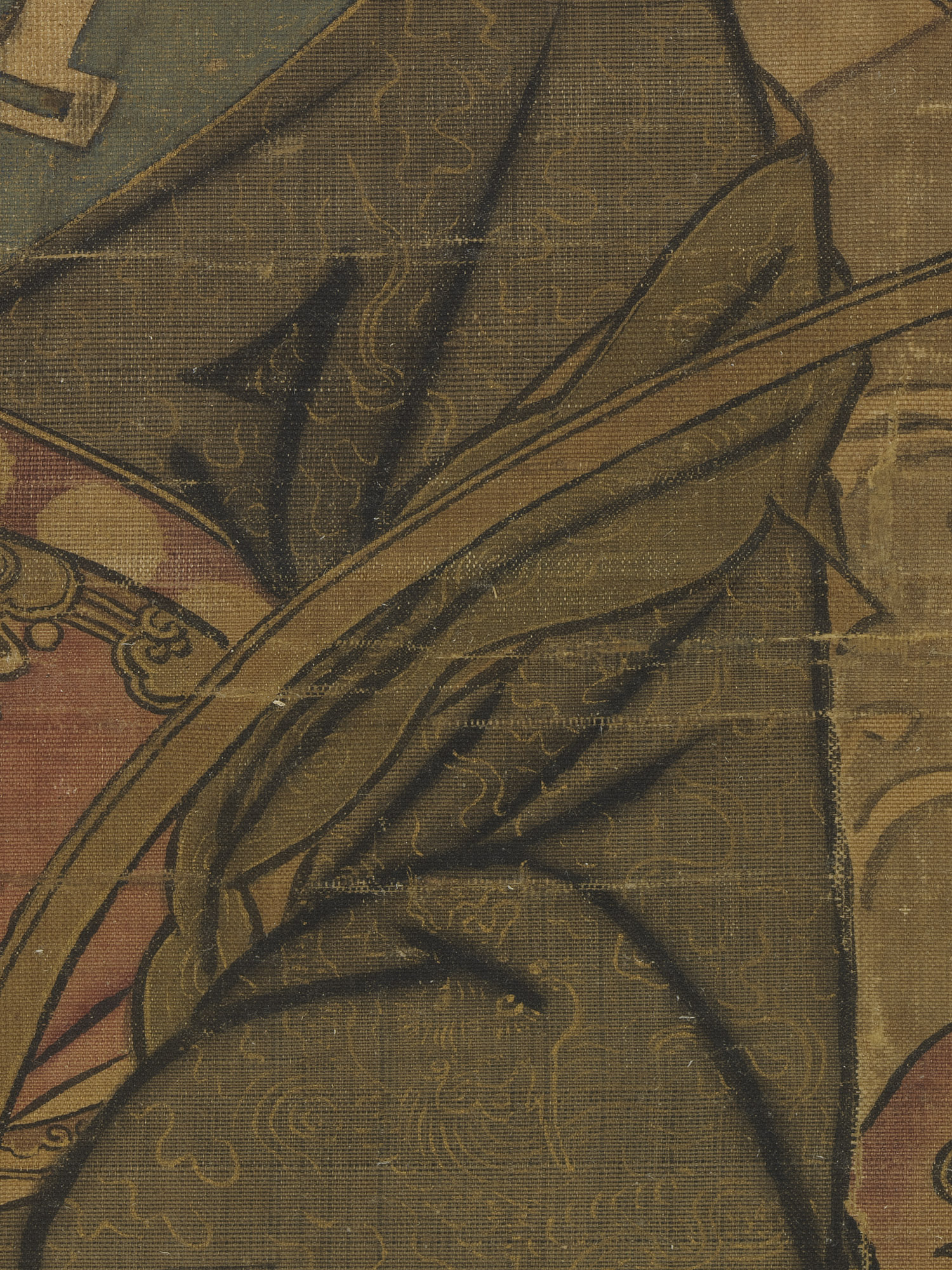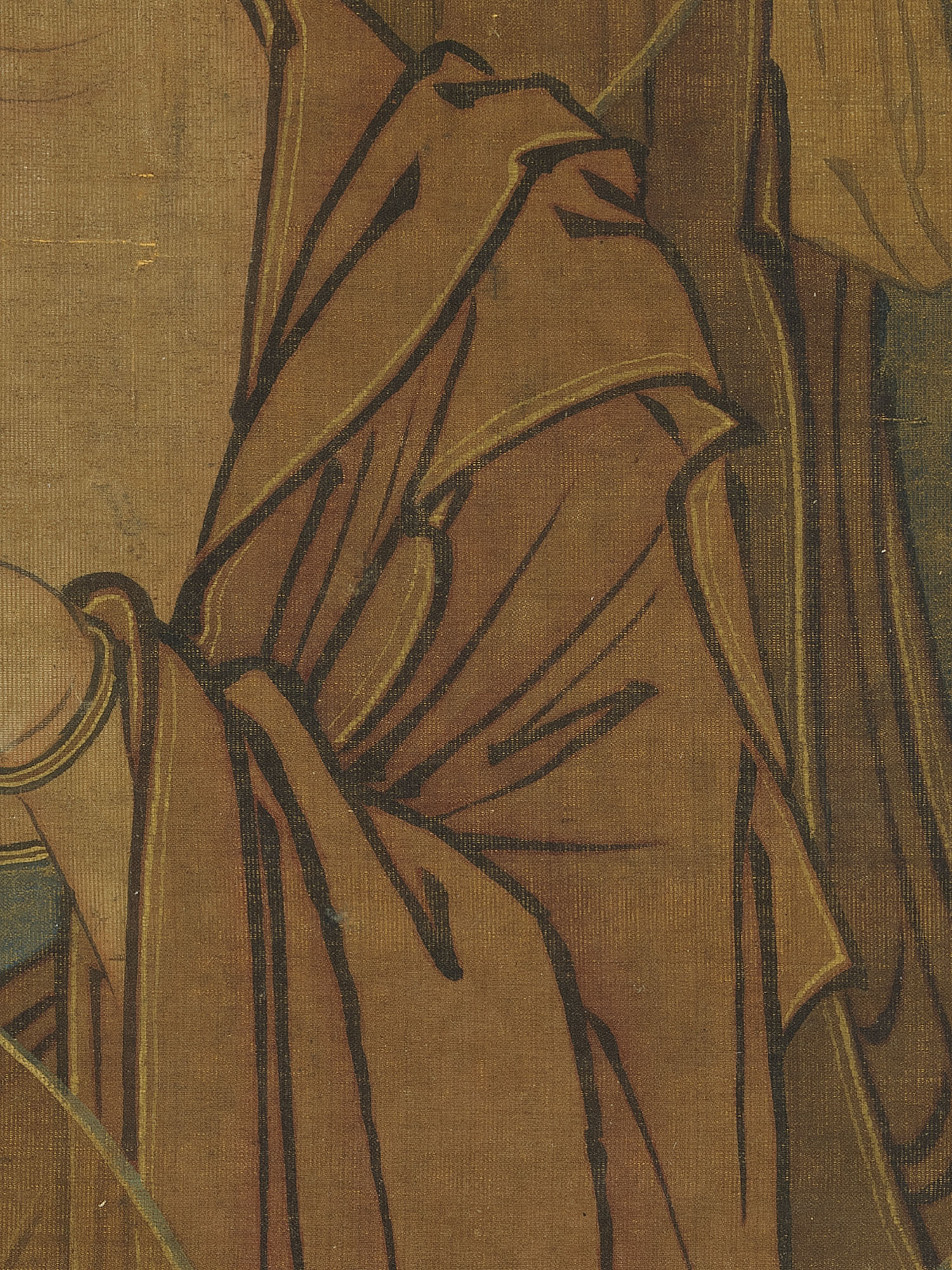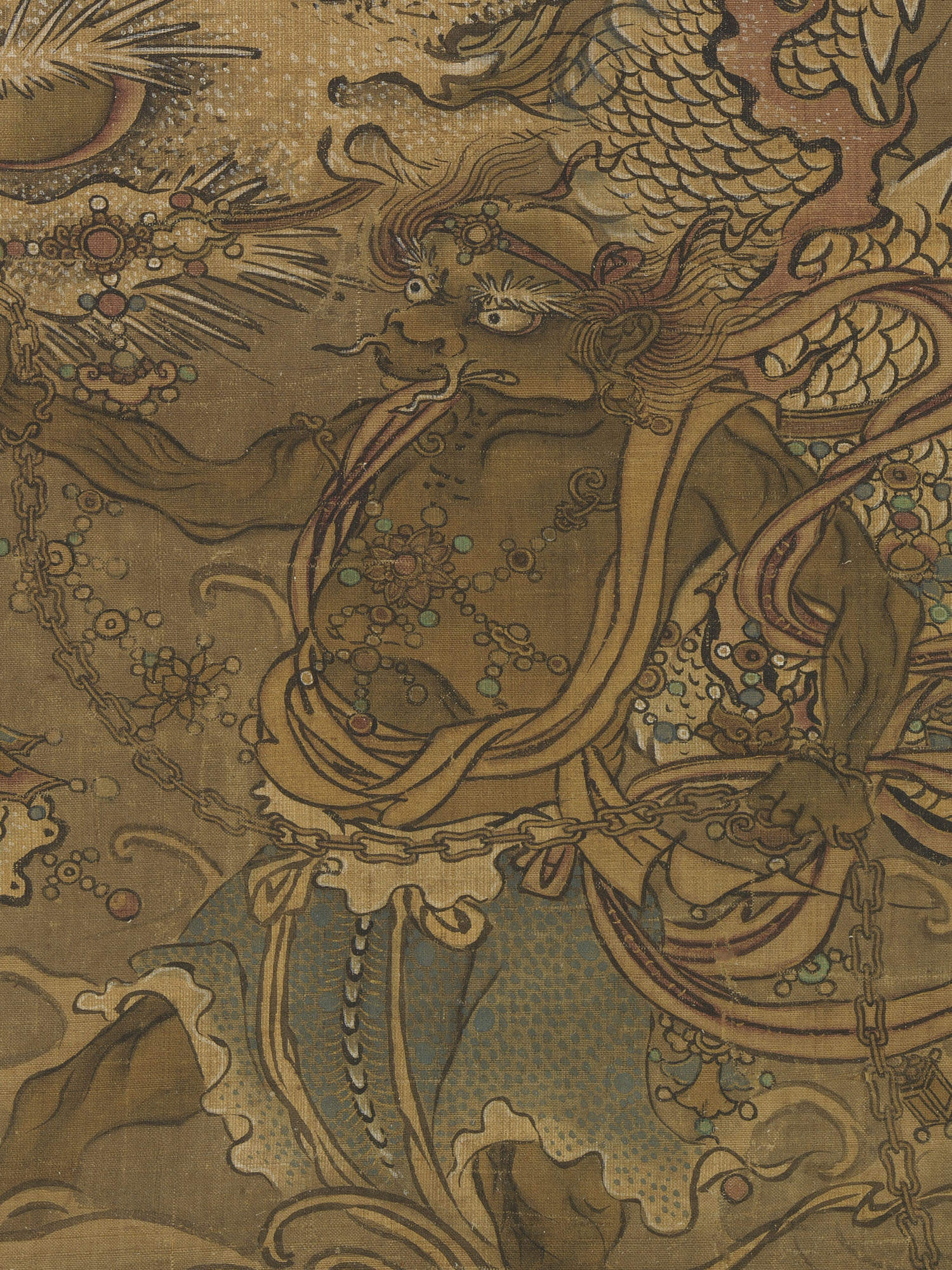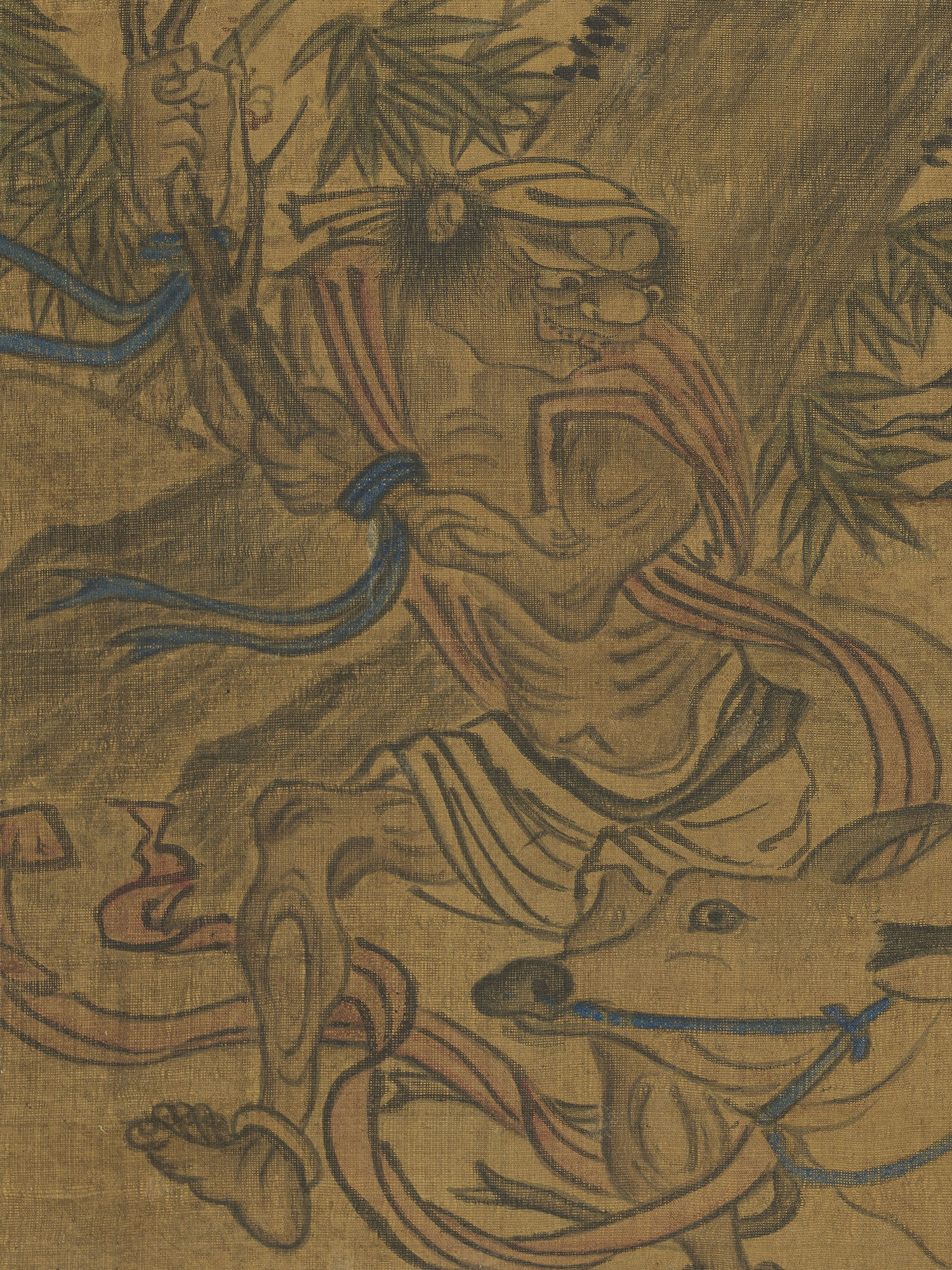Painting Techniques
Who painted the painting?
According to its original label, this piece was painted by Ma Lin, a Southern Song Dynasty (1127-1279) court painter active during the 13th century. His father was the important Song dynasty painter Ma Yuan (circa 1160s-1225).
The person who actually painted this work indeed used Ma Lin and Ma Yuan’s painting techniques to create its landscape scenery. “Axe-cut” texture strokes applied with the side of the brush were employed to render the textures on the boulders, while the “trembling brush” technique was used to describe the waves. However, the Taoist deities and the various demons and sprites are stylistically much closer to Yuan (1271-1368) and Ming Dynasty (1368-1644) religious figure painting.
The precise period in which this work was painted remains undetermined, but it is generally thought to have been painted no later than the Ming Dynasty.
Analysis of Painting Techniques
Boulders
Boulders in the featured painting are depicted using the “axe-cut texture stroke” technique, similar to those used for boulders in Ma Lin's Quietly Listening to Soughing Pines.
-
- Ma Lin, The Three Taoist Officials Making an Inspection Tour, National Palace Museum (NPM) collection.
-
- Ma Lin, Quietly Listening to Soughing Pines, National Palace Museum (NPM) collection.
Waves
Waves in the featured painting are depicted using the "trembling brush" technique, with crests resembling curly tentacles, close to how waves are painted in Ma Yuan's Water Studies.
-
- Ma Lin, The Three Taoist Officials Making an Inspection Tour, NPM collection.
-
- Ma Yuan, Water Studies, The Palace Museum collection.◎See reference page for image sources.
Faces
Deities in the featured painting have plump faces and smooth features depicted with flowing lines, a reminder of faces painted in the Yuan Dynasty Pair of Lohan Paintings.
-
- Ma Lin, The Three Taoist Officials Making an Inspection Tour, NPM collection.
-
- Anonymous Yuan Dynasty Painter, Pair of Lohan Paintings, NPM collection.
Clothing
Clothing folds in the featured painting use tapering lines in the "nail-head and rat-tail stroke" technique, similar to the treatment of garment creases in the Yuan Dynasty Pair of Lohan Paintings.
-
- Ma Lin, The Three Taoist Officials Making an Inspection Tour, NPM collection.
-
- Anonymous Yuan Dynasty Painter, Pair of Lohan Paintings, NPM collection.
Physiques
Demonic attendants in the featured painting have skeletons painted with ink lines and muscles emphasized by ink washes. Similar approaches to attending demons’ physiques can be seen in Zhong Kui in a Forest in Winter attributed to Ming Dynasty artist Li Shida.
-
- Ma Lin, The Three Taoist Officials Making an Inspection Tour, NPM collection.
-
- Li Shida, Zhong Kui in a Wintry Forest, NPM collection.

